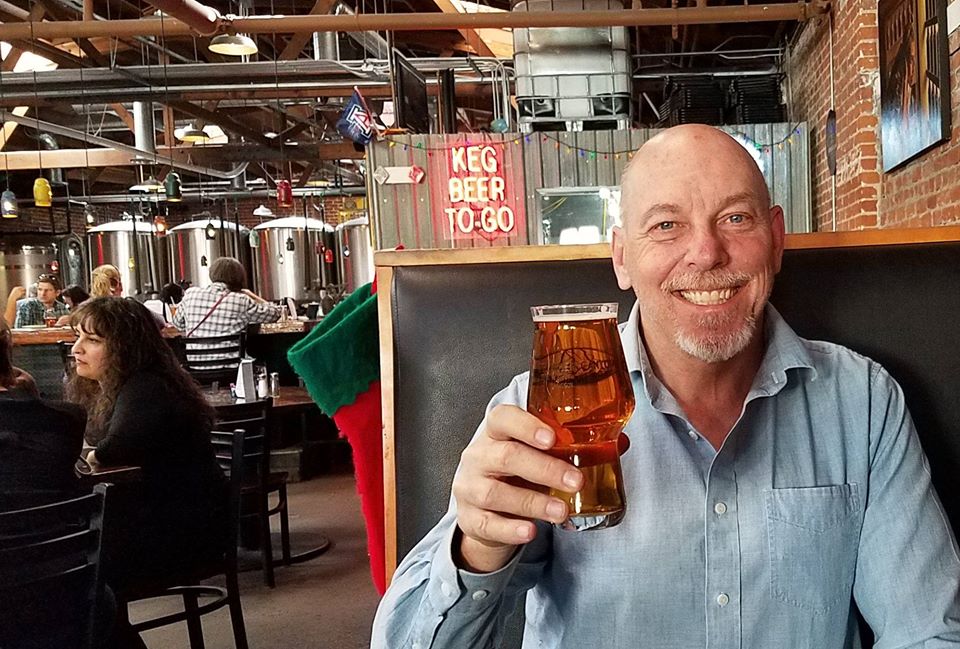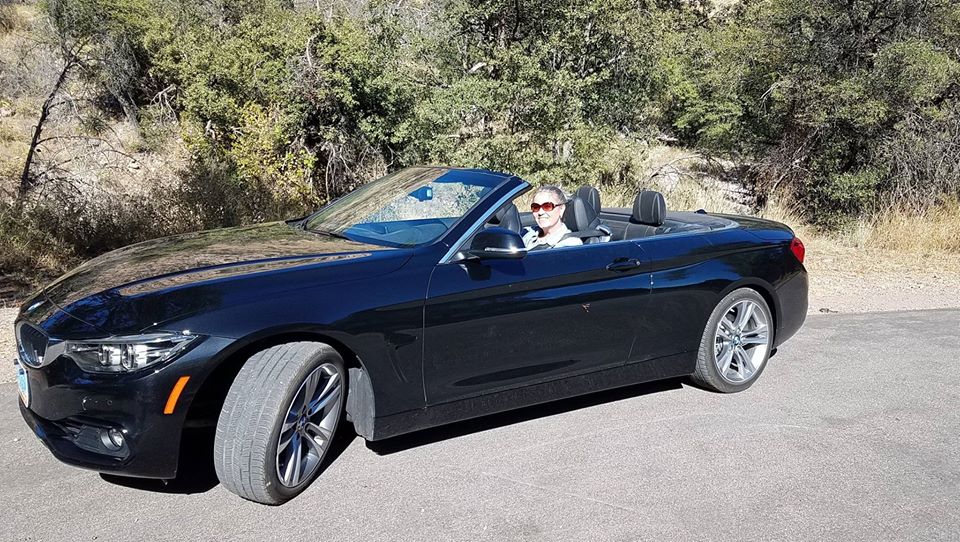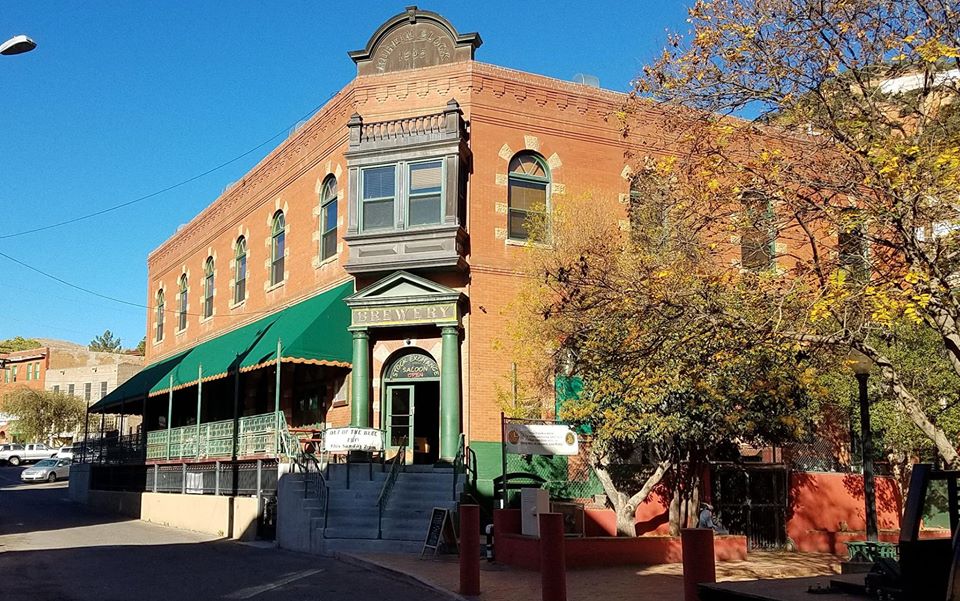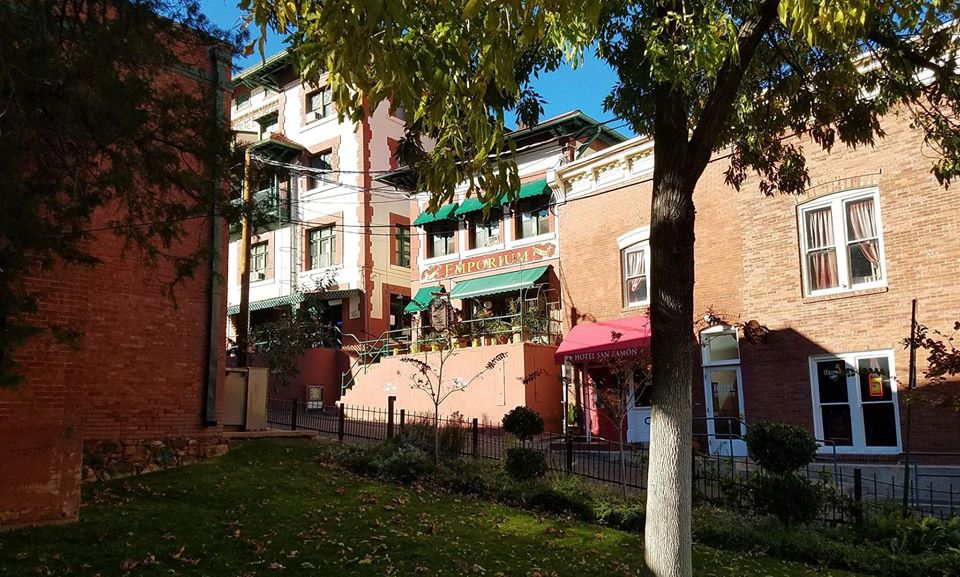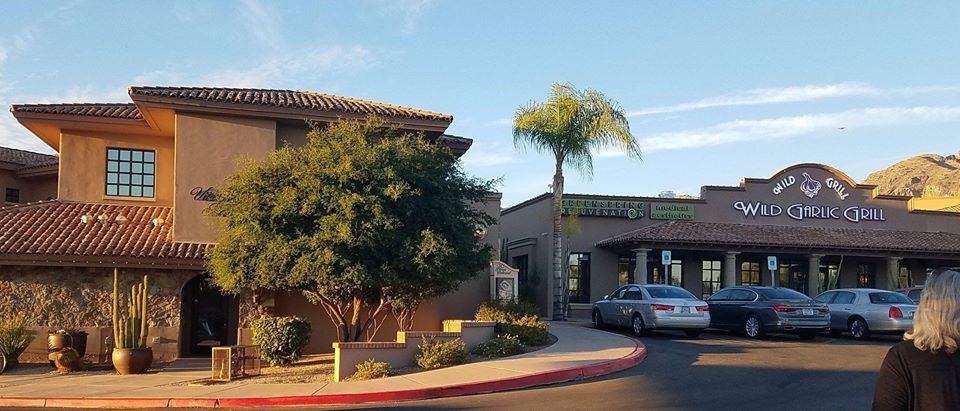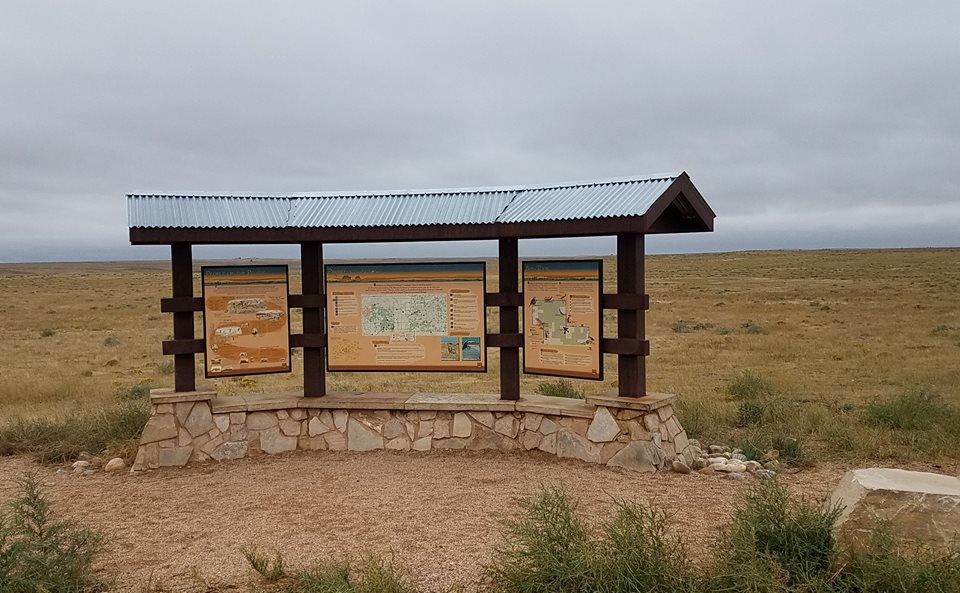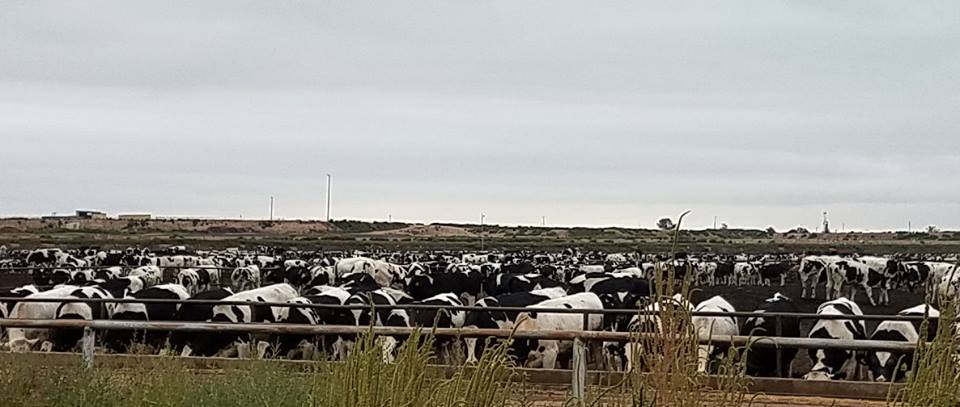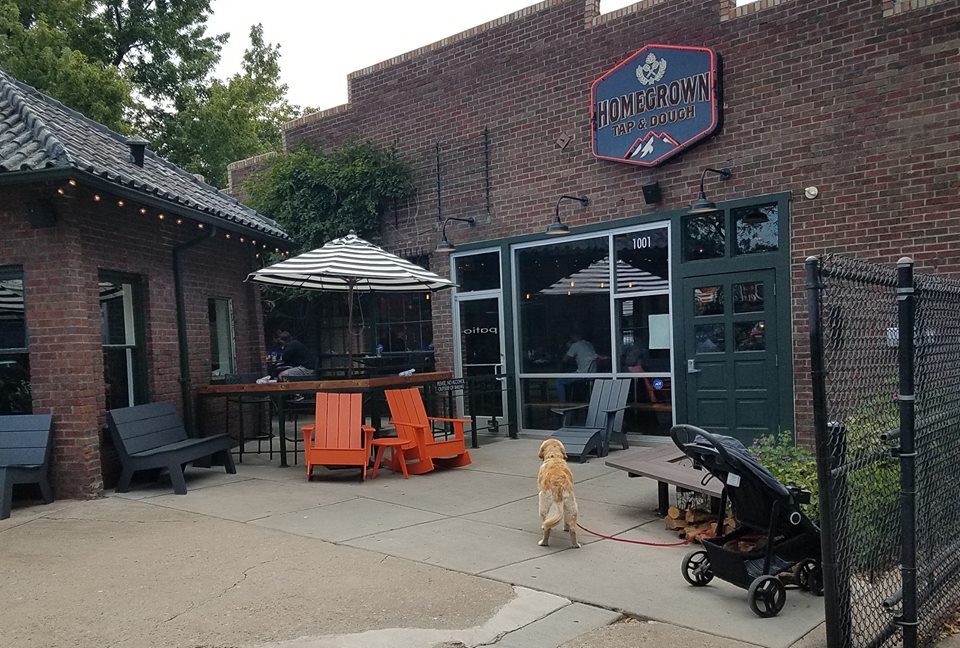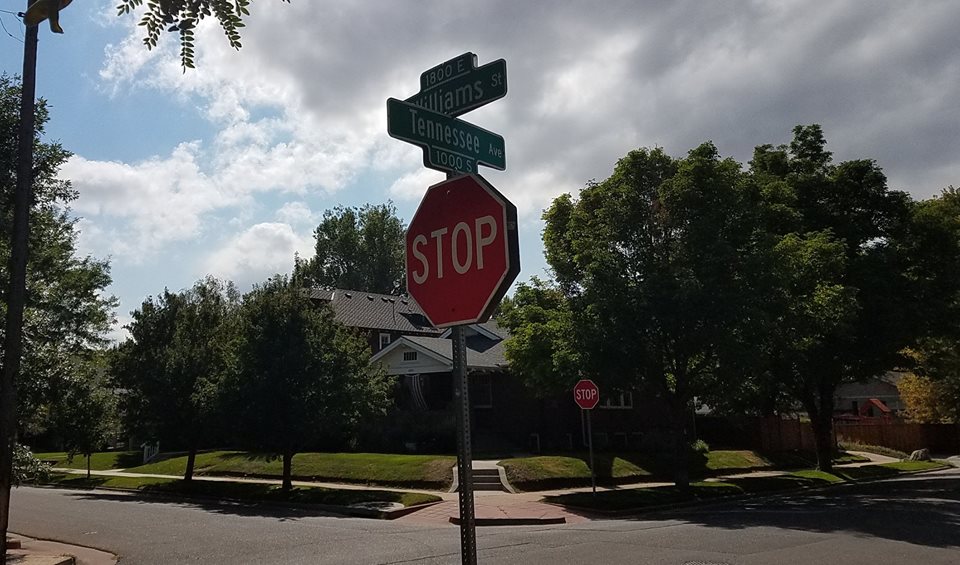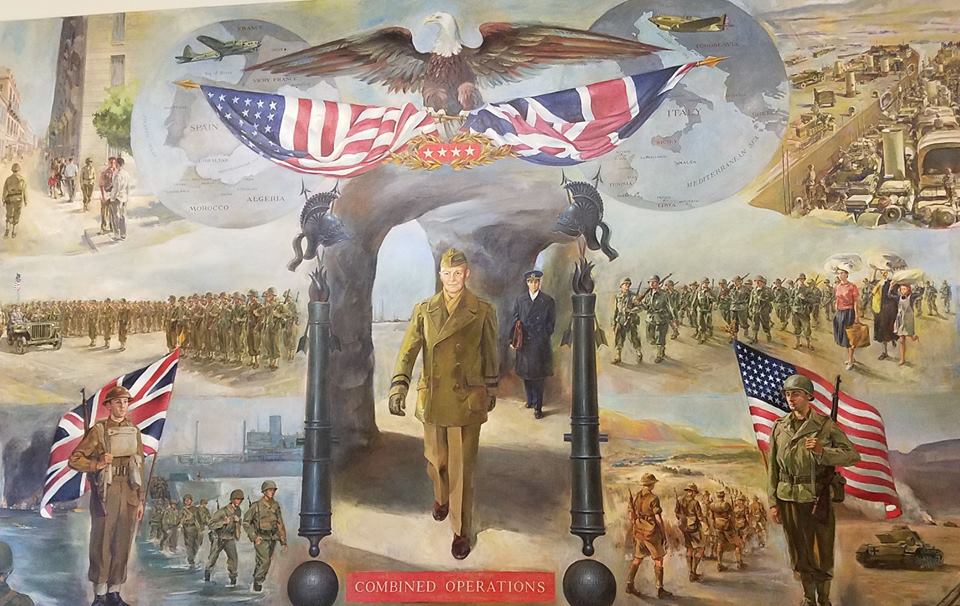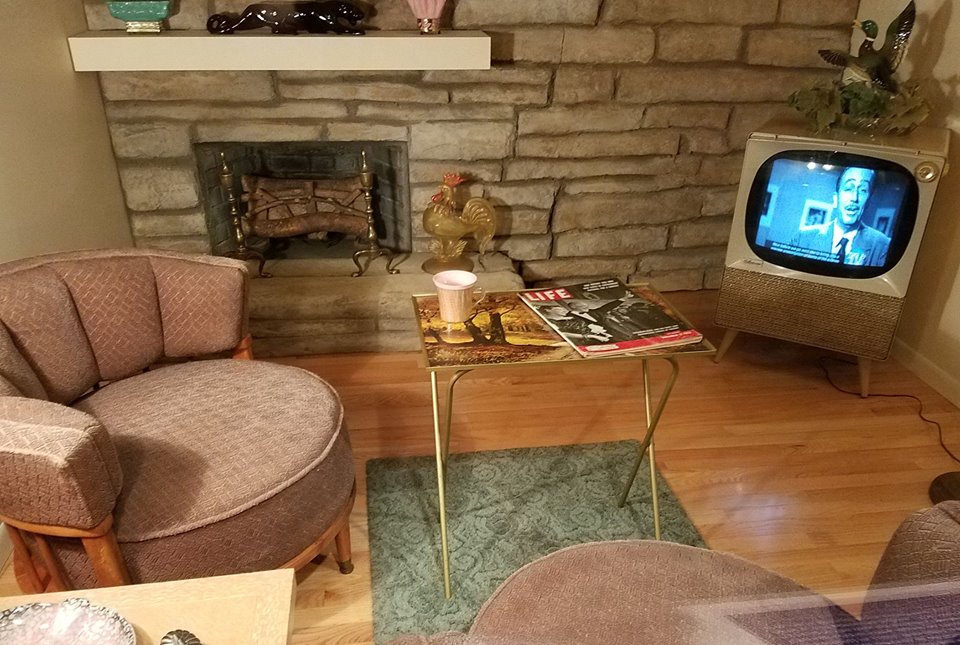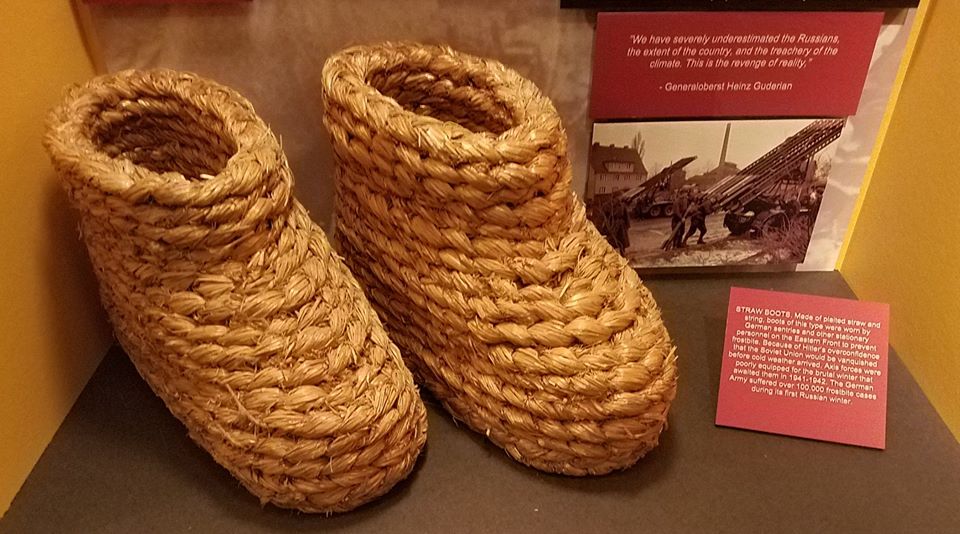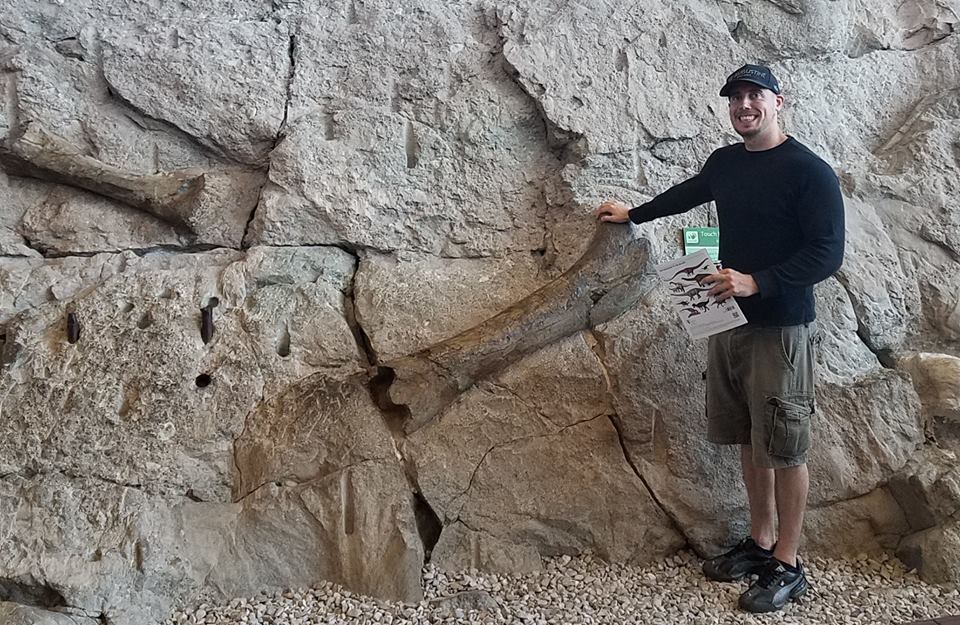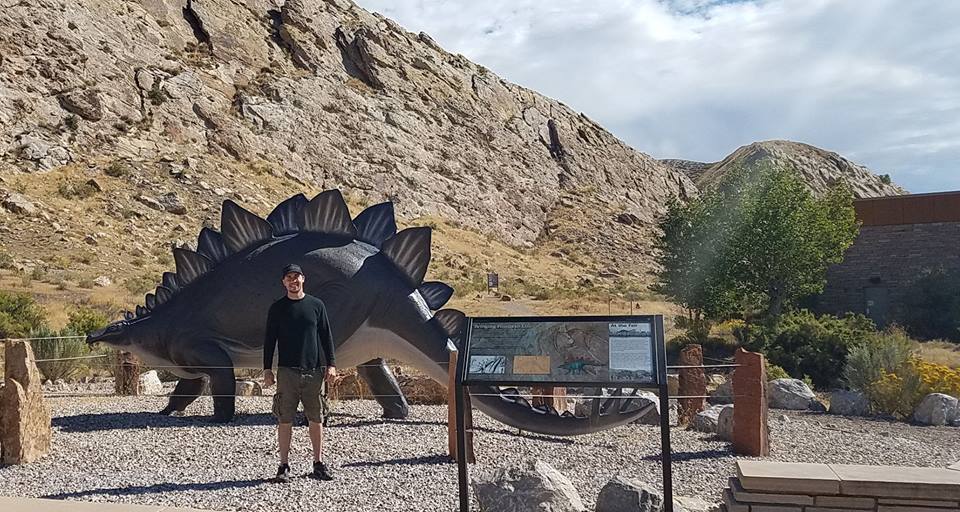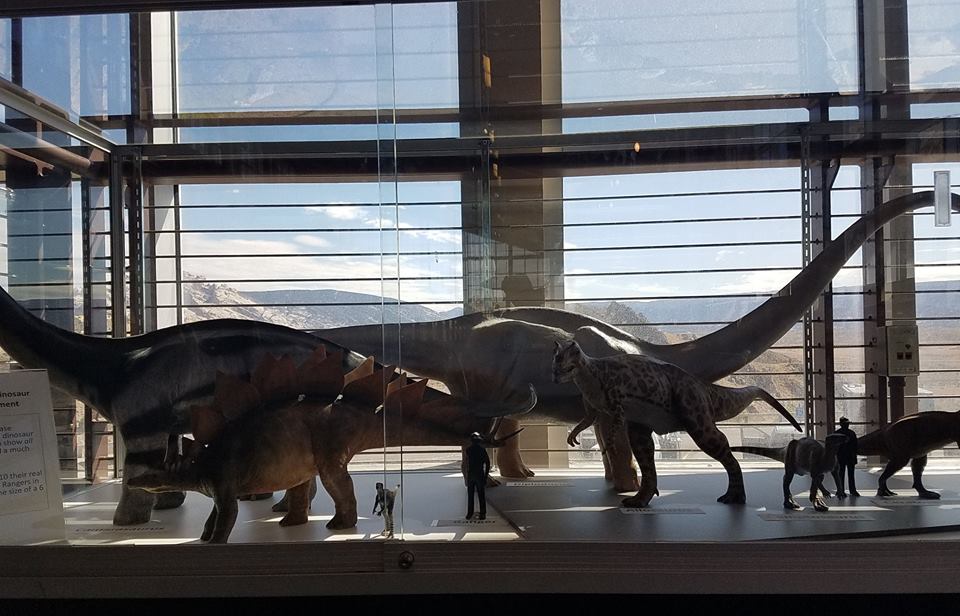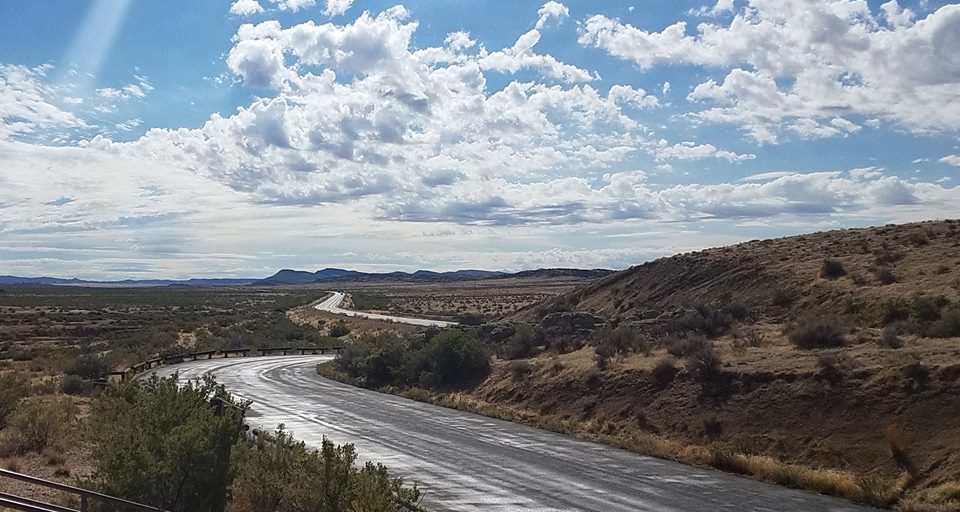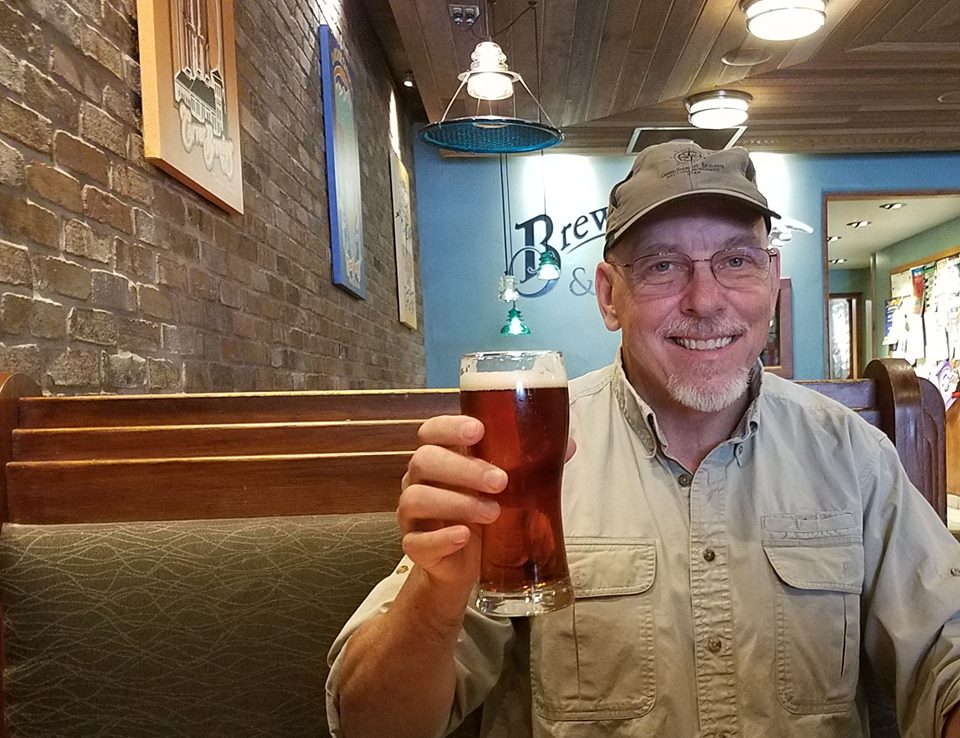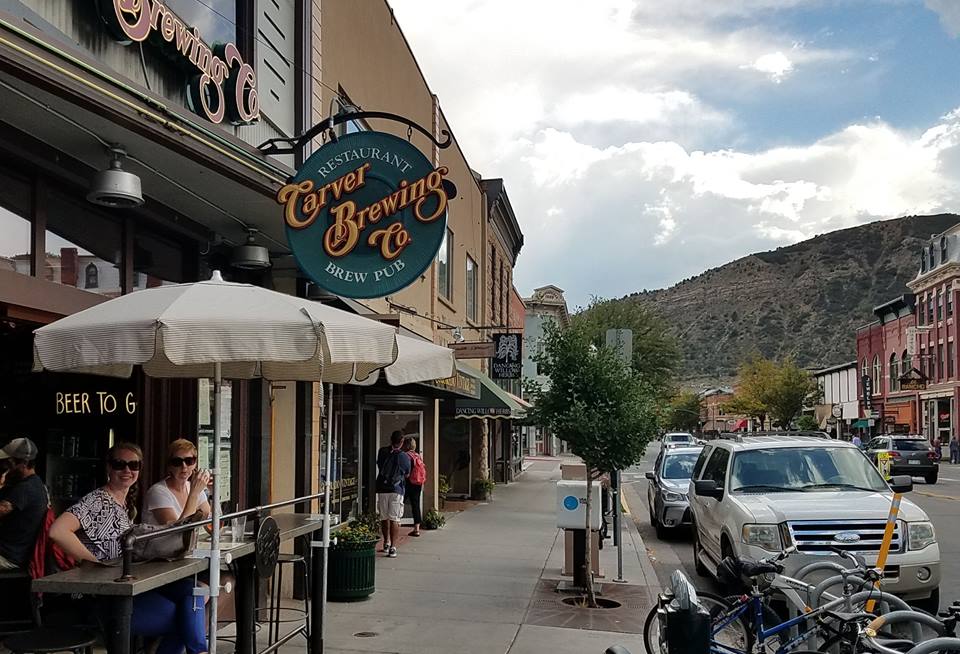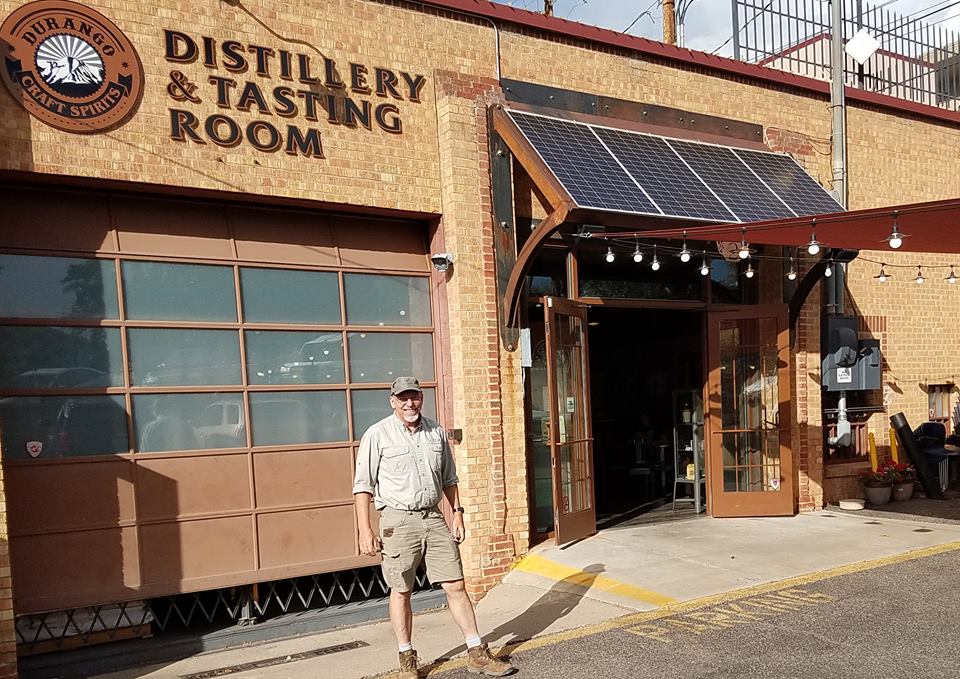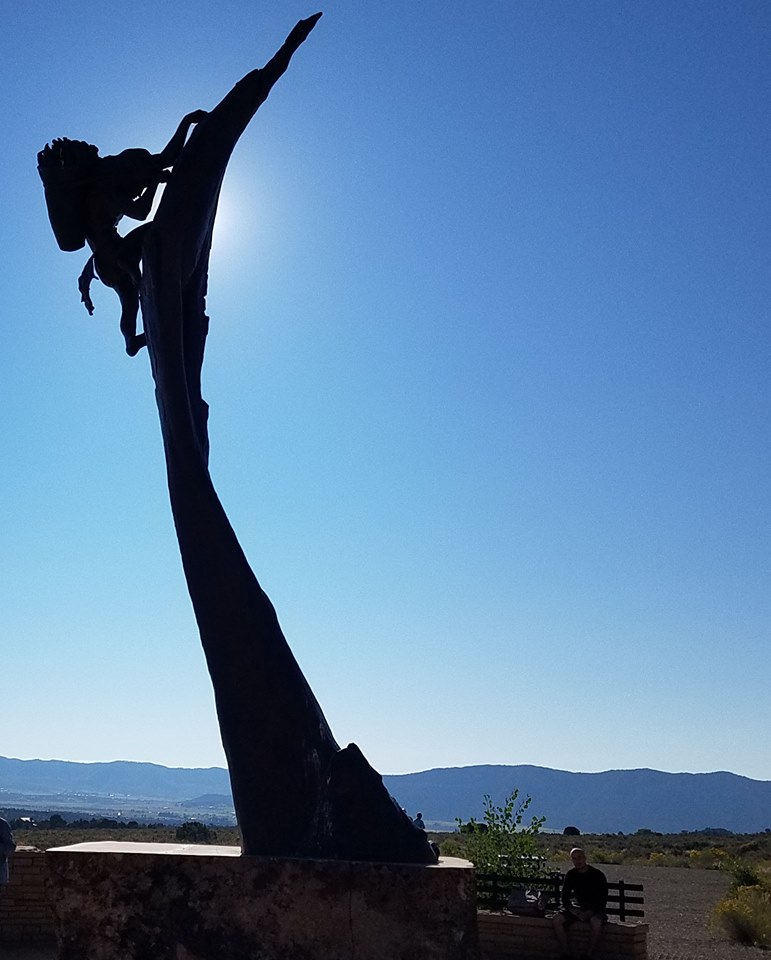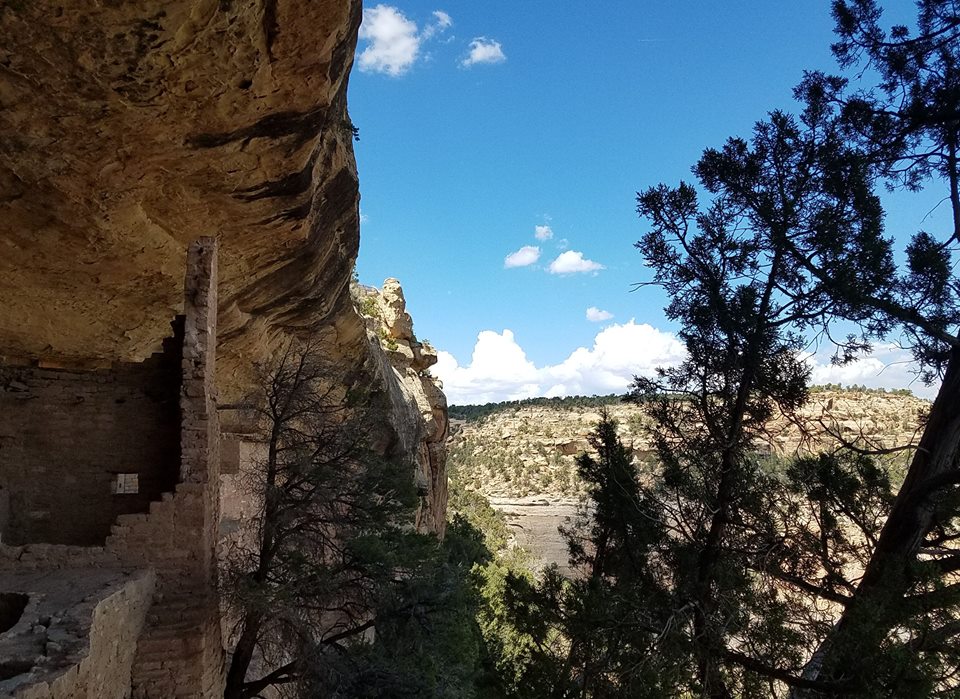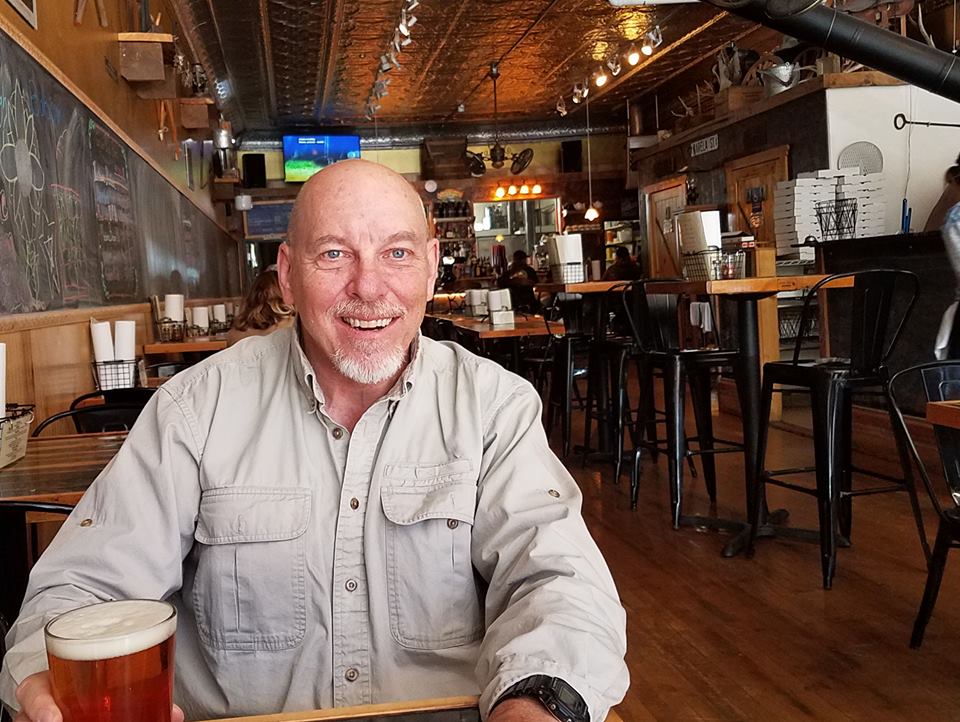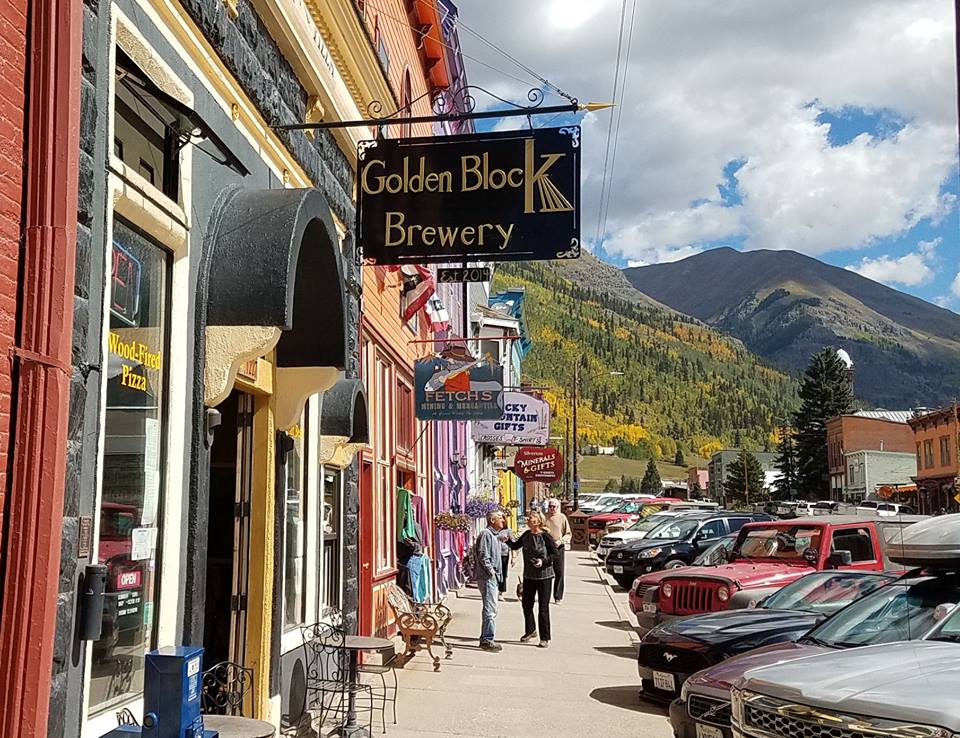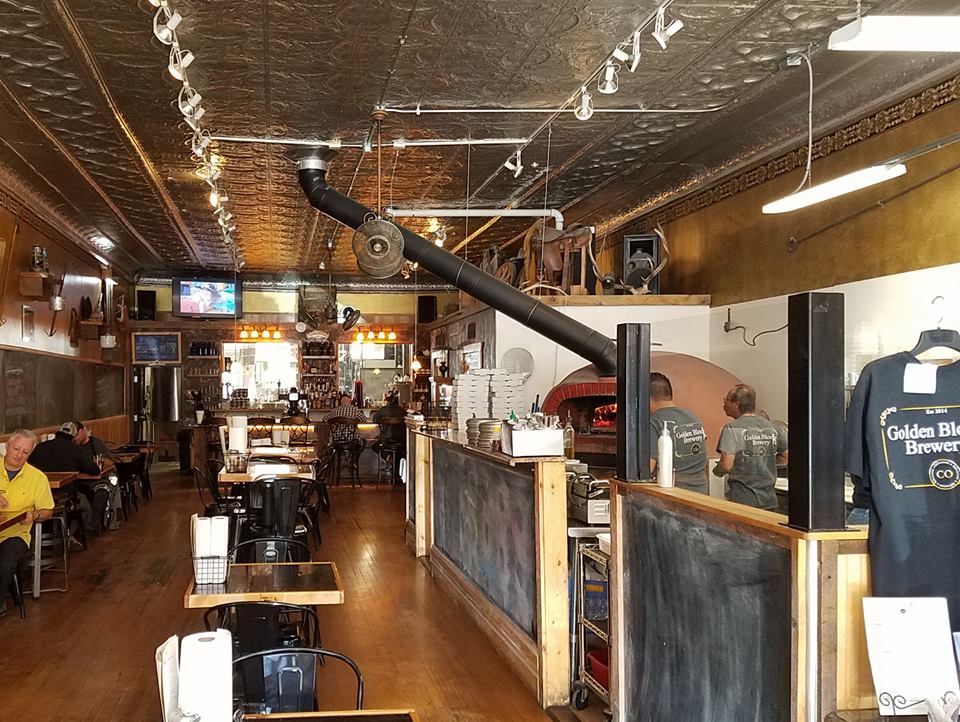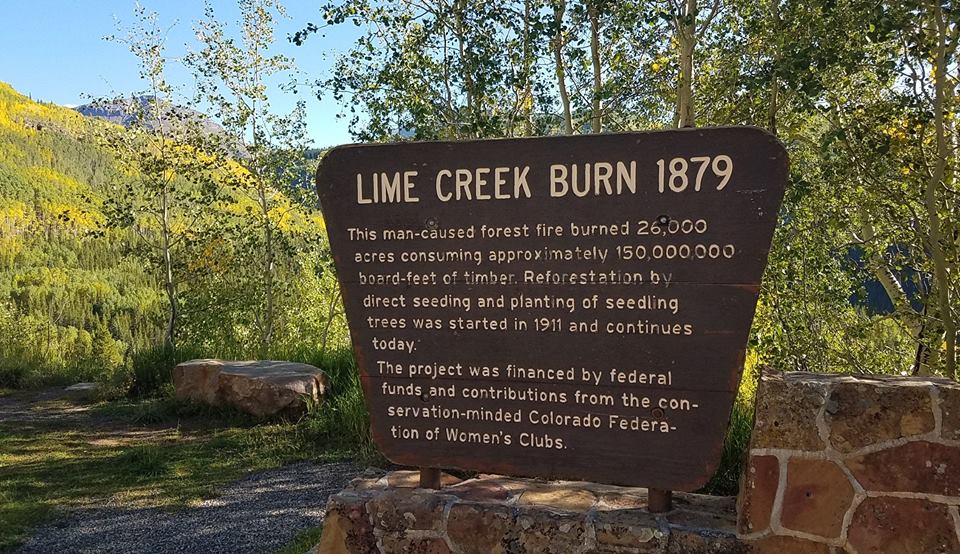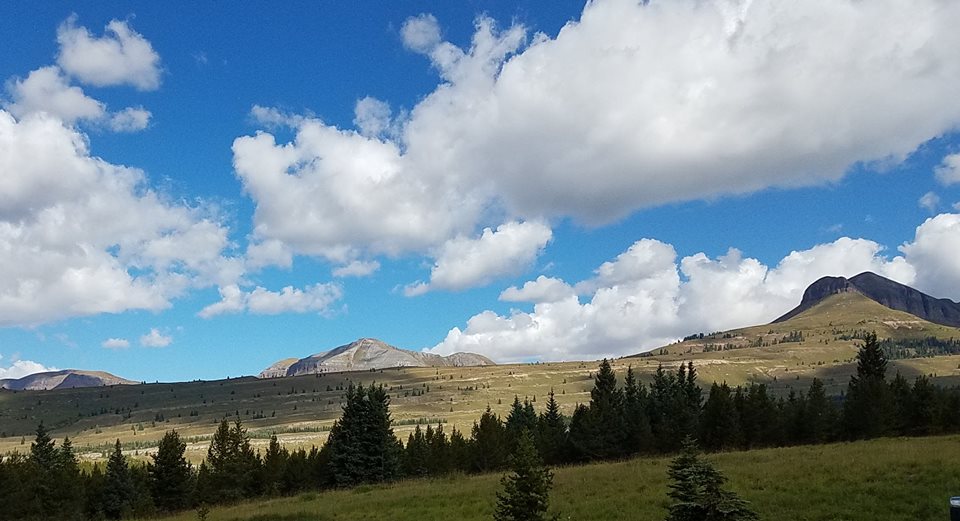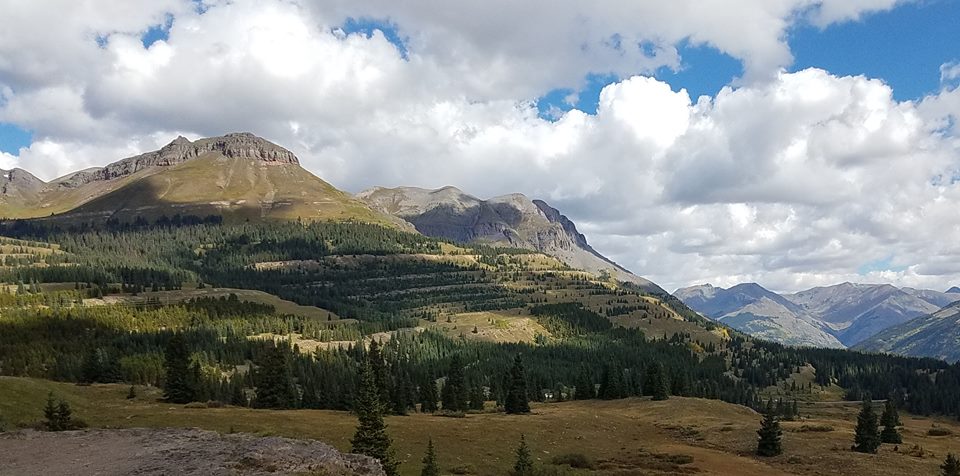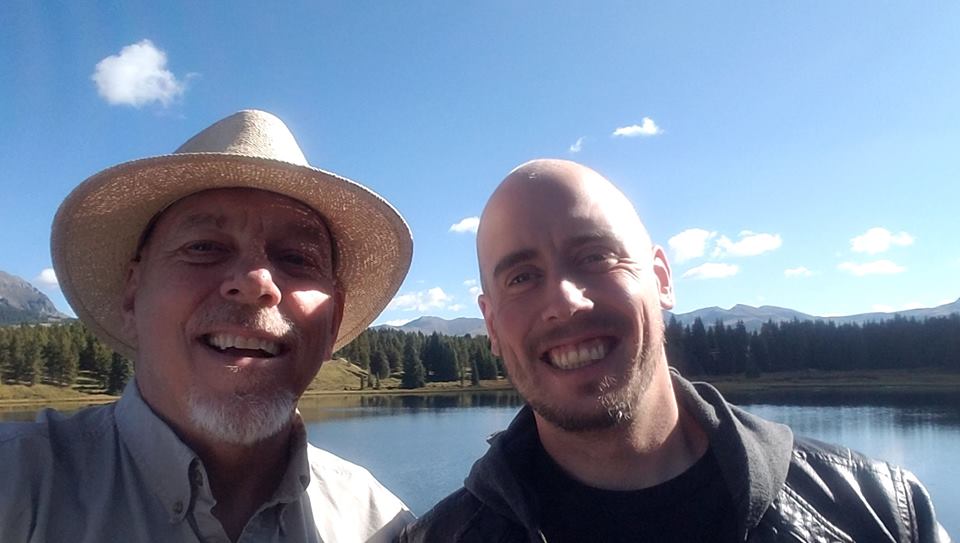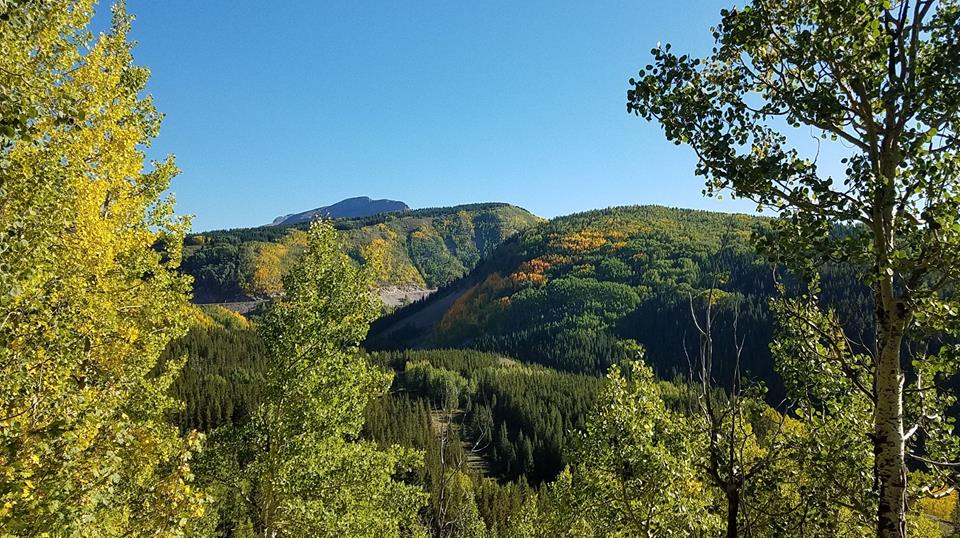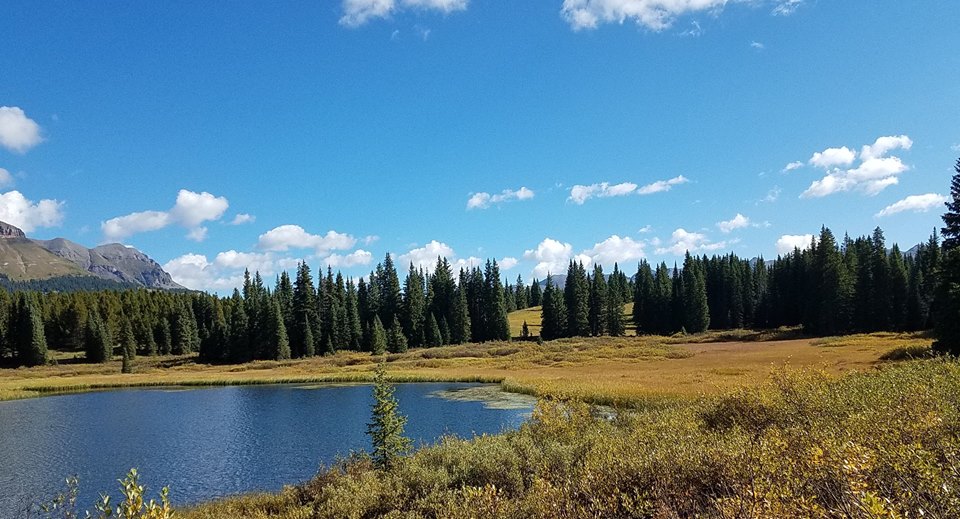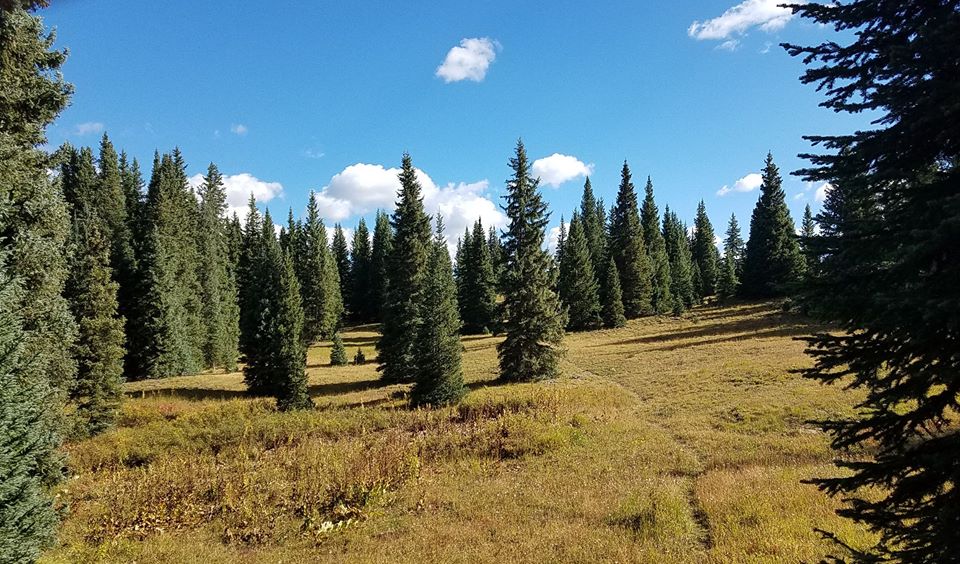In keeping with my beer tour activities, we stopped off at Thunder Canyon Brewery in Tucson. They have an IPA called “Sky Island”. It tasted good, but the taste came second to the name in my book. Anyway, the photos below are self explanatory, except maybe the last one. That is a left over picture from the Ramsey Canyon/Sky Island post of a couple days ago. Ramsey Canyon had people living there permanently and seasonally escaping the hot desert. This shack is typical of them and seems familiar to anybody who has watched old westerns. I could imagine the sheriff coming up to see if outlaws were holed up in a place like this.
Bisbee, Arizona
We came here to look at TNC lands with Apache pines. I will write about that in a few hours. But meanwhile we enjoyed some nice things in southern Arizona.
We drove through Bisbee, Arizona. It used to be a big mining town and there were lots of rich people there at the turn in the late 19th and early 20th centuries.They built some nice houses, often in the eclectic style of people newly in the money. But the boom did not last and prosperity moved elsewhere, leaving a smaller city with a bigger past. The funky atmosphere, pleasant climate and inexpensive real estate attracted lots of the children of the 1960s, after Haight-Ashbury got too expensive and too square. They ended up here, where they seem to have aged in place, making it a kind of new age haven. Lately, there has evidently been a boom in brewing, which is a good thing.
First picture shows Chrissy & I hoisting a couple of local beers in Bisbee. Next is Chrissy in the rental car. After that is the bar where we drank the beer and a street scene from Bisbee. Last is the pre-dawn sky from cousin Elise and Carl’s house.
Visiting Elise & Carl
Visited cousins Elise and Carl in Marana, Arizona. We had a really good meal at Wild Garlic Grill.
Islands in the Sky
Sky islands are communities of plants & animals in places like Arizona characteristic of more northern ecologies. Altitude substitutes for latitude. They are remnant populations, surviving from a time when the earth was much cooler during the most recent ice age. As the earth started to warm about 10,000 years ago, these cooler-adapted communities moved up the mountains. They are like islands because they are surrounded by scrub or desert. That makes them precious and vulnerable, since they are unconnected to other islands or to the larger populations of their similar species, i.e. from seed/genetic banks to regenerate if a population was extirpated locally. It also makes them extremely interesting, since you can essentially go through biomes from hot desert to something like Canada by walking up hill and they provide lessons for adaption when climates change.

We came to the sky island at Ramsey Canyon to see Apache pine, pictured above. I learned that Apache pine have an ecology kind of like longleaf and kind of like ponderosa. Since I love both those species, I wanted to get to know these too. Apache pine are mostly present in Mexico’s Sierra Madre. They extend into the USA in parts of New Mexico and Arizona on patches like Ramsey Canyon. The Nature Conservancy owns a the preserve at Ramsey Canyon. I asked if I could talk to the steward of the place, and Eric Anderson was good enough to spend the morning with us, explaining the unique ecology of this part of Arizona. Eric and I are pictured below.
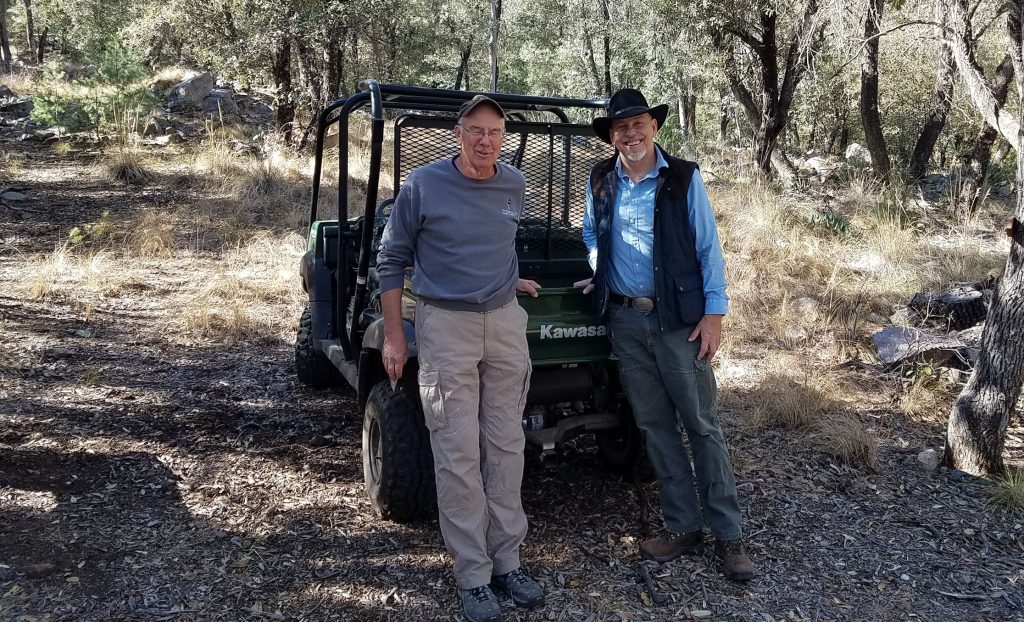
Ramsey Canyon sits at the nexus of four disparate biomes. To the north are the Rockies; south are the Sierra Madre; west is the Sonoran Desert and east is the high Chihuahua Desert. All of these influence the plant and animal communities, and you find species associating in ways like no place else. For example, Eric showed us agave cactus next to Apache pine, not far from Douglas fir and partly in the shade of massive sycamores.

You can see some of this above and below. The Douglas fir surprised me. There were some really big ones. I associate Douglas fir with the rain forests of the Pacific Northwest. I did not expect to find them thriving so far south and near such dry deserts.
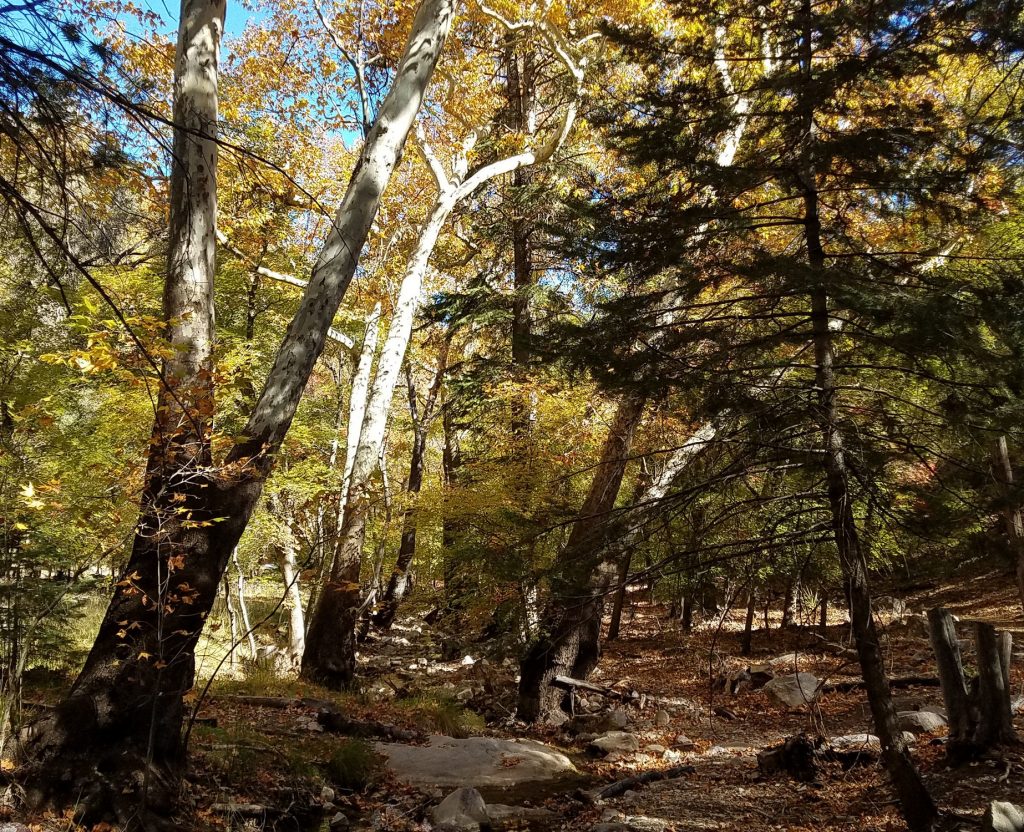
Most of the timber from the region was cut in the late 19th century, with the wood used for houses, mines and fuel in what were then fast-growing places like Tombstone and Bisbee, at the time among the fastest growing cities in the USA. Eric thinks that accessible forests were was mostly clear cut and the wood hauled away. Forests regenerated, but they were very different from those they displaced. The open and park-like coniferous forests were replaced by thick brushy forests of scrub oak. What these forests mostly produced was fuel for disastrous fires. When conifers did grow back, they also came in thick, what foresters call “dog hair” woods. These provide little space for the food that supports wildlife, and, like the scrub, they burn very hot.
On a tangent, Eric told us that the oak trees do not drop their leaves in autumn. They hold them throughout the winter and drop them in spring, before the hot and dry period in April and May. Those are the hottest two months. After that, the rains arrive and the wetter and cloudier weather cools the hills.
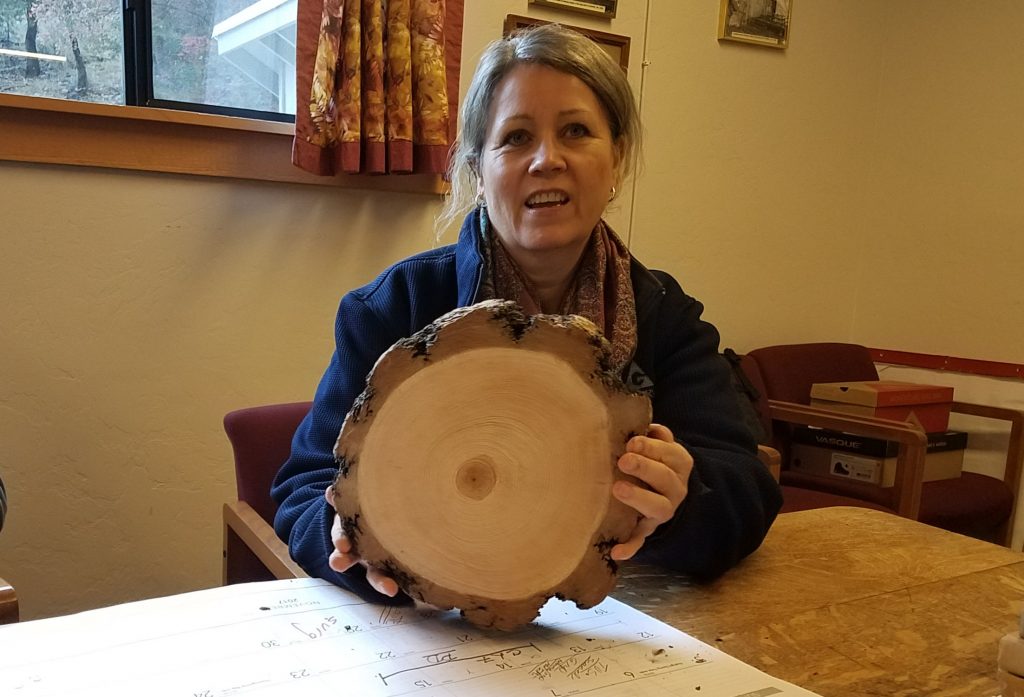
Fire was a key component of the pine forests. It burned through every 7-10 years, but those fires were low intensity. It knocked out the scrub but big trees were largely immune. The new fire regime featured less frequent but hotter fires that destroyed much of the standing forest and burned to the bare earth. It was a terrible cycle and we are still suffering. You can see a cross section of an Apache pine in the picture above. The thick bark is almost immune to low intensity fire. The two cuts you see below are about the same age. The one grew in an open forest; they other was part of a “dog hair” forest.
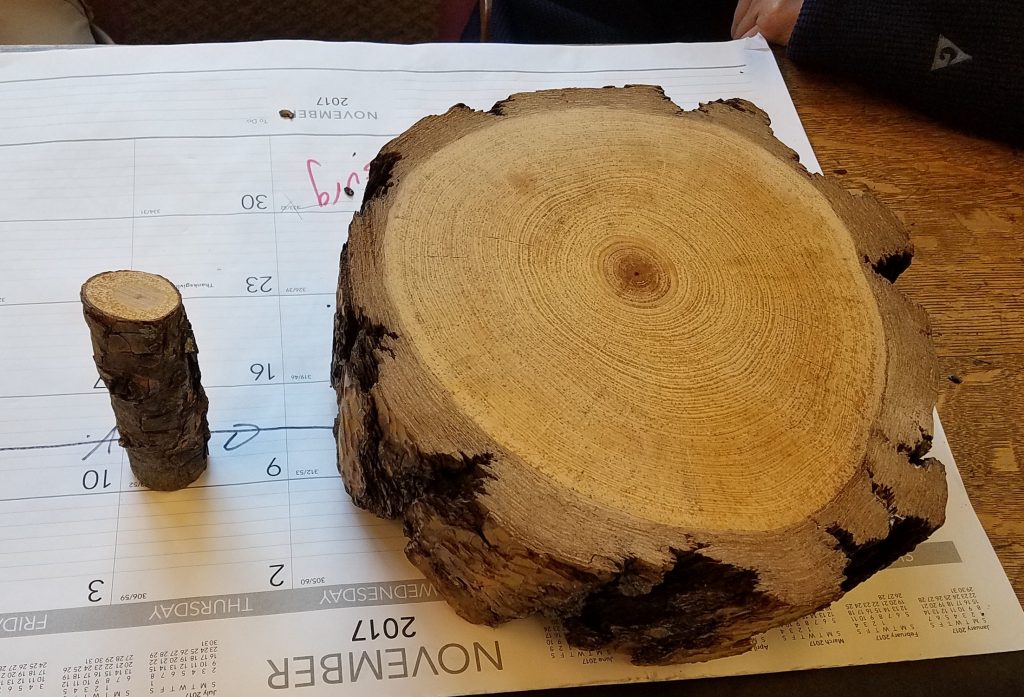
TNC wanted to reestablish natural rhythms, but could not used fire as much as the the natural ecology would indicate because there is too much chance of it getting away into nearby inhabited places. Another complication is that Ramsey Canyon is surrounded by wilderness areas. You would think that wilderness areas would be more “natural,” but you would be wrong. These areas were also impacted by the logging and mining of past, but now they are frozen in that state. They also grew back in the scrub and “dog hair” manner. They are full of fuel and are liable to burn in that disastrous way I mentioned above. Because they are officially called wilderness, they are subject to various restrictions and cannot be managed to reduce fuel and fire risk in ways that would be applied elsewhere.
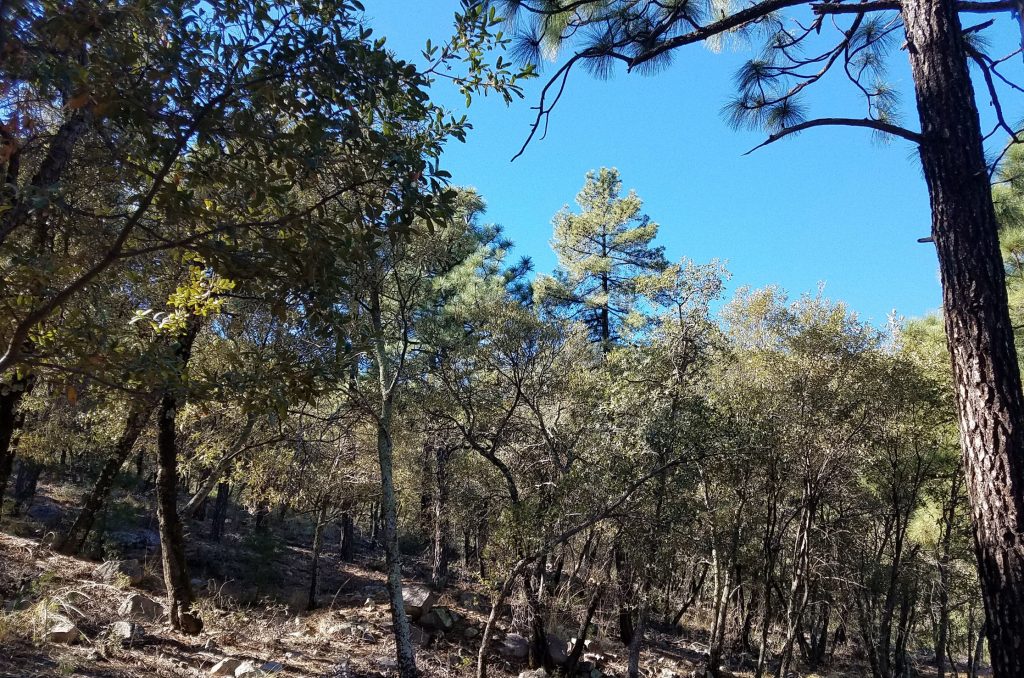
On the TNC land, they have thinned down the scrub oak on the north facing slopes and they hauled away the cutting. This is not as good as thinning followed by prescribed fire, but it as close as they can do under the current restraints. Some beneficial results are already clear. We saw regeneration of Apache and Chihuahuan pine, seedlings and young trees. The young Apache pine look a lot like longleaf in their grass and bottle brush stages.
There was a nice section of almost pure Apache pine. We could see carbon on the trunks and speculated that this area was fortunate to have a few low intensity fires pass through. It is amazing what comes back when you reestablish some of the natural factors. You can see the thinned brush above and below. Eric says that before the thinning, it was almost impossible to walk through the brush. Since the thinning, he has noticed that raptors like hawks have come to the area and more wildlife in general is present.
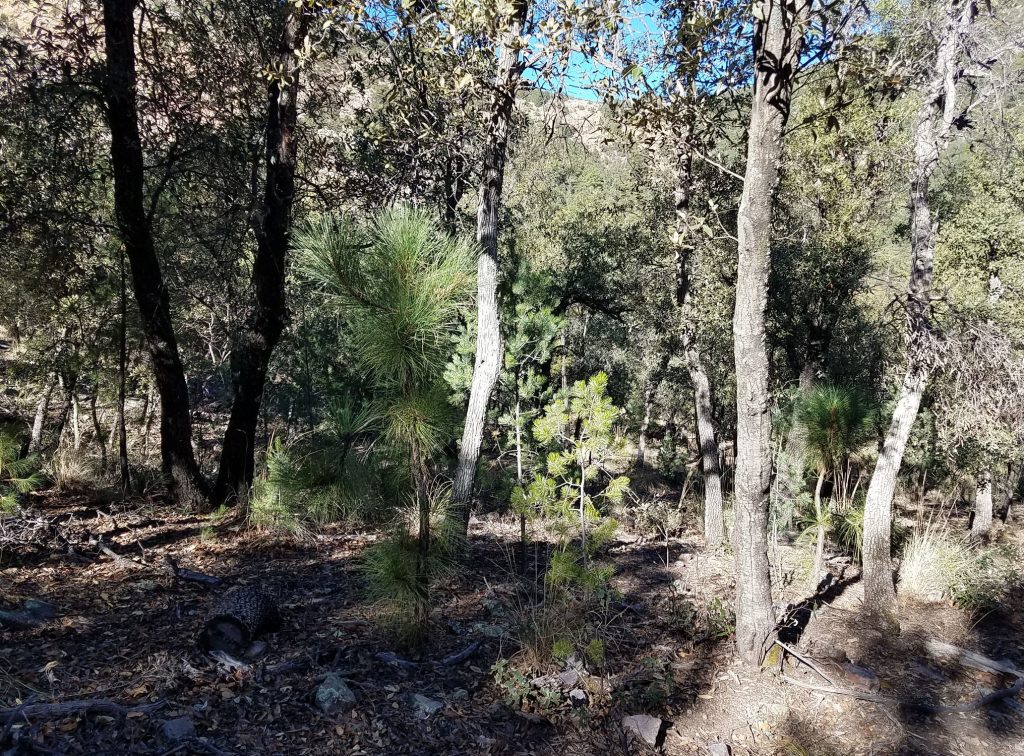
Eric shared a poignant story about the guys who do the thinning. They are convicts from the local prison. It is sought after work for them and Eric says that they are usually hard-working and thoughtful men, but with the big problem is that they cannot stay out of trouble. He says that when they get out on parole, they often come by with their wives or mothers to show them the work. They are proud of the work they did and the restoration they helped encourage. Eric stays in touch with some of them, but it is hard for them to stay on the straight and narrow. When they get out, they often fall in with the same sorts of people and lifestyles that caused them the trouble in the first place.
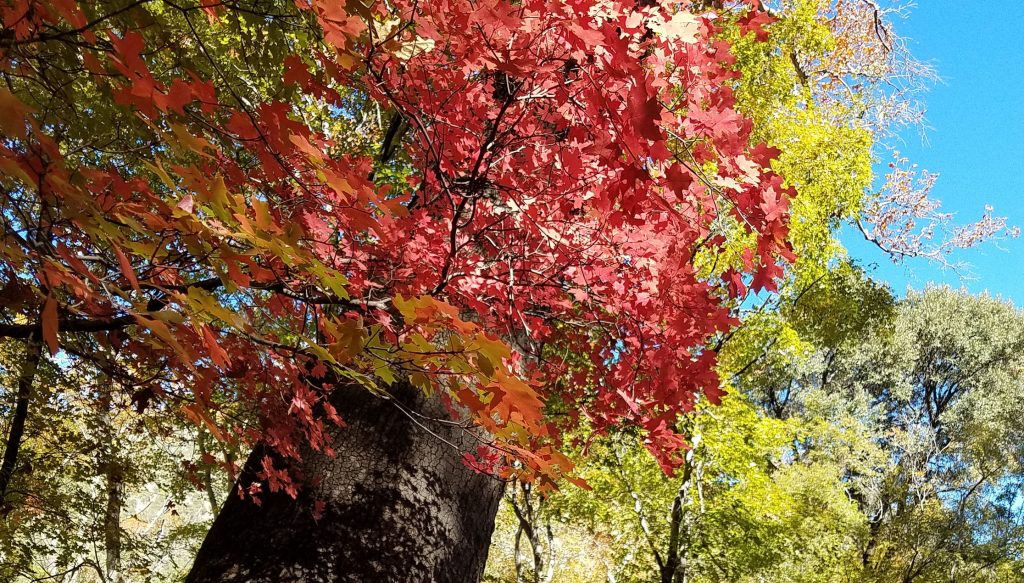
TNC is doing wonderful work to protect and regenerate these precious sky islands, and they do such excellent work wherever they are. I love what they are have done and are doing with longleaf. Theirs is the perfect combination of doing-learning-adapting and doing again. I have visited TNC preserves all over the country. Seeing their work and hearing about it from the people doing it is a great privilege.
Below is a link to more information about Ramsey Canyon.
Pawnee Grassland & Denver
We stopped off at the Pawnee National Grassland. There is no doubt a lot to see if you know where to look. I do not, unfortunately.
The area just east of Denver is very intensely used by cattle operations. I have never seen anything like it in Virginia or Wisconsin. The smell was not pleasant, but I expect you get used to it.
Had a nice beer and pizza at “Tap & Dough” in a nice Denver neighborhood near Washington Park. Nearby is the the intersection of Tennessee Williams.
It looks like ash trees are the most common sort of street tree in Denver, which makes the emerald ash borer especially bad news. You can protect the ash trees but it is expensive. Some in Denver are taking steps to protect their trees.
Eisenhower Library
Long drive today from Denver. Started at 5am after Alex left at the Denver Airport. Finished in Columbia, MO at around 7pm.
Stopped off to see the Eisenhower home and library in Abilene, Kansas. Eisenhower is the most familiar president in that he was an ordinary guy. His rural Midwestern background is not one I grew up with, but I knew lots of people who did. Guys like Ike probably could not have been my uncle, but they could have been Chrissy’s.
Eisenhower was president when I was born. While I do not have any memory of him, his America was the America of my childhood. The living room in my picture below, for example, is very familiar, right down to Walt Disney on the TV.
Eisenhower was thought to be just an amiable guy and not a very effective president when I was in college in the 1970s. Since that time, historians have come to appreciate his abilities. He was a guy who did not need to take personal credit, one who could work with and through others. He tried to head off and avoid problems, rather than ostentatiously solve them. This is a great leader, but when such leaders do their jobs very well, people think that stuff just happened.
As is written in the book of the Tao, when the best leaders accomplish their purpose, the people say, “we did it all ourselves.”
My pictures are from the Eisenhower Museum in Abilene. First is the Ike statue, followed by his boyhood home and a mural of him as a coalition commander. Next is a typical living room of the time. Last is a pair of boots the sort that German soldiers wore on the Russian Front to keep their feed warm. Not a pleasant experience in any way.
Ponderosa pine
Following Route 191 we found very beautiful ponderosa pines, as you see in the first picture. The Mustang Ridge Fire burned 22,000 acres, mostly of juniper-pinyon pine forest. It pretty much wiped out these and they still are not regenerated. The ponderosa pine seem in better condition.
I have been aware to fire scenes as we have been driving through the West. Some landscapes are much more fire adapted than others, but what they have in common is that they are overgrown and too much fuel has accumulated.
I read an article today, “Interior’s Zinke Demands ‘Aggressive’ War on Fires, Stop Letting ‘Nature Take Its Course.'” This is overdue. There will be fires. They can be postponed but not permanently prevented, nor should we try to prevent them. We need to manage fire.
The Forest Service planted big sagebrush, shown in the second picture. The last two pictures are from farther along the road in Wyoming. It continues to amaze me how empty parts of our country still are. We drove for hours at 70mph and lots of the time saw nobody.
Dinosaurs
Alex and I visited Dinosaur National Monument, near Vernal, Utah. It is literally a dinosaur quarry.
What is now Utah was wet and tropical in the Jurassic Period, and a river ran through it. This river attracted dinosaurs and over the eons some of them died and fell in.The river washed their remains together, where they were covered by sediment and some of the bones turned to stone. There is a survivor bias among the bones. Small animal remains were just crushed, while the big ones persisted long enough to turn into fossils.
With changes in climate, the river ran dry and the former river bed was buried. But the earth never rests. As plates moved, the former river bed was tilted and thrust up to the surface.
The dinosaurs rested in the rock until 1909 when Earl Douglass of the Carnegie Museum went to Utah to search for dinosaur skeletons. This is where he found the mother lode.
The four corner area is the richest dinosaur region in the world. It is not so much that there were more dinosaurs living here, or that there are more preserved here, but the dry conditions and exposed rock makes them easy to find. It is also the case that there were/are more people looking for fossils in the U.S. than in most other places. It is likely that the local Native Americans occasionally stumbled on these fossils, and may have noticed them, but with no scientific or cultural infrastructure, they remained only curiosities, maybe not even that.
The first picture is Alex in front of the dinosaur quarry wall, now enclosed and protected. Next is Alex in front of the model stegosaurus. It was nice to see his enthusiasm, only a little more concealed than when he first came here when he was only four years old. The third picture are model dinosaurs. Notice the model ranger to give perspective. Penultimate is the lonely and winding road. There is an amazing amount of space out here. Many stretches were you get no bars on your mobile phone. Last is a grouse wing collection spot. It is not mere morbid collecting. Researchers use the wings to study bird numbers and migration patterns.
I thought maybe I would post the beer picture first this time rather than last of the day. This one was taken at the Vernal Brewery. Alex said that I merely have the same photo each time, so I changed it up by putting on my hat.
Vernal Brewery has a nice outdoor seating area and it is conveniently located across the street from the dinosaur museum. Alex and I went to the museum and then just walked over.
I have been enjoying my time with Alex and I am happy to think that he is enjoying his time with me. One of his friends was supposed to go along but dropped out because he could not get off from work. I feel bad for Alex, but it worked out better for me. My role on the trip would have been much more passive. I think it likely that I would avoided some of the more strenuous hikes, like the one to Angel’s Landing.
This is the second time Alex and I have been to the dinosaur places in Vernal. He does not remember well the first time in 1992, when the whole family drove from Spokane, Washington to Washington, DC between our assignments in Norway & Poland. FSOs get “home leave” to be reacquainted with our country. On our home leaves, we crossed the country going east from San Francisco to by train, from Seattle, Spokane & Phoenix by car. Now I have to do it on my own, but I still want to do it.
As I sat in the Vernal Brewery across from my adult son thinking of the boy so excited by the same dinosaurs that I could still see across the street, I felt acutely the passage of time. Looking down at my aging hand, I doubted I would ever pass this way again. This might be the last big hiking trip with Alex and we will certainly never again do a family cross country trip. Driving with three kids asking when we were going to get there was not fun at the time, but it is remembered better than it was lived.
My first picture is my beer photo with the permutation of a hat. Next is Vernal Brewery. When you look at the building, one thought should enter your mind – it could have been built faster and better in the same form using cross laminated timber. That is what popped into my head.
Number three the the traditional duel between triceratops and tyrannosaurus. It was standard fare for the dino myths of my childhood. Scientists now believe that such things never happened, that tyrannosaurus was colorfully feathered and that they didn’t walk around in that clumsy clipped kangaroo fashion. But besides that, it is accurate and it was the best science at the time. Next is a full skeleton of a long necked dinosaur. Finally is something called a “mochops”. I never heard of it before, but I appreciated the quizzical look on its face. I noticed that several of the animals depicted have looks like that. I think that is more the result of the artist than the science. Maybe he used his dog as a template.
Mesa Verde 2
My last pictures for the day. I am posting my relaxing photos. They are all the same, but in different places. This one is in Carver Brewery in Durango, Colorado. They have good beer that they make on the premises.
On the walk back, we passed Durango Distillery. They are only recently in business and have so far made moonshine, i.e. clear and not aged whisky and vodka. They are in process of making a Bourbon-like beverage. It was aging in white oak barrels, but will not be ready for another two years. I tried the products on offer and bought a bottle of “Mayday Moonshine,” which I will share and enjoy with Chrissy when I get home.
My first picture is me and beer. Next is the brew pub outside, followed by the Durango Distillery. Second last is from the visitor center at Mesa Verde. I thought it was sort of artistic. Last shows our guide for one of the ranger programs at Mesa Verde.
Travels in Colorado & days of fire past
Day’s end
My end of day post with my daily beer. This one was at Golden Block Brewery and Restaurant in Silverton, Colorado.
Chrissy pointed out that my beer pictures imply that I am a boozer. I do tend to drink beer almost every day, but I do not drink all day. I usually have no more than a couple beers, often have only one, and some sad days none at all. I like the “beer experience,” but I do not habitually pound down very many.
Fires of the past
I have been observing the ghosts of forest fires past during my trip. I mentioned the fire that destroyed the piñon pine-juniper ecosystem at Mesa Verde. I will put the link to that one in the comments section. It did not recover even after almost fifteen years.
Today I saw the effects of an even older fire. The Lime Creek fire destroyed 25,000 acres of spruce-fir forest way back in 1879. It has not recovered even now.
This is very different from the fire regimes in Virginia and the Southeast, where the forests begin to recover the next growing season and where many forests are actually fire dependent. I visited the site of the Peshtigo Fire that in 1871 was the largest fire in American history. Those forests have grew back through natural regeneration.
Location and the precise ecology is very important.
Look at the pictures and notice that the trees are in rows. People started to plant trees back in 1911 and the process is still continuing. I didn’t climb up to look, but it looks like there has been little natural regeneration in places not planted. Again, this is so different from what I observe in the rainier pine forests in the south and the lake states.
Quick moves among ecosystems
A remarkable thing about the west is how fast you can move among vastly different ecosystems. Yesterday, we were in the high desert. We went to the piñon pine-juniper ecology by midday and ended the day among the ponderosa montane forests. Today, we moved through the ponderosa and into the spruce-fir ecology, where these pictures are taken.



